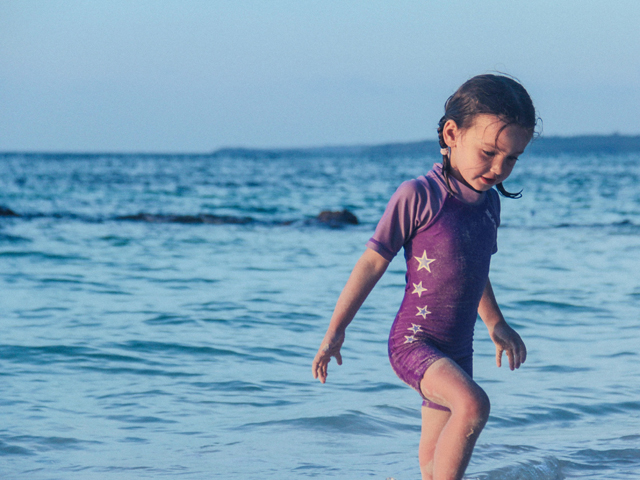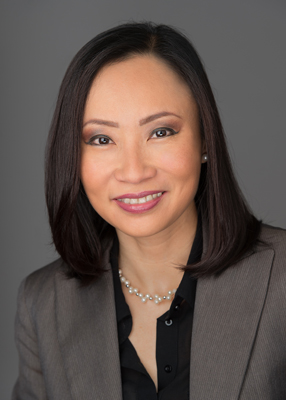Dr Leona Yip Sun Safety For Children Interview

Leading Skin Doctor: 'Sun Safety' In Schools Urgently Needs More Attention
According to one of Australia's leading dermatologists, Dr Leona Yip, how we think about 'sun safety' for our children urgently needs attention with the incidence of skin cancers continuing to rise at a rapid rate.
"Over the past few decades, many schools have adopted strict sun safety policies that urge children to wear hats, sunscreen and sunglasses. While some schools are good at applying these policies, many need urgent action to improve their management of sun safety. Sun safety isn't just about wearing a hat, it's about sunscreen and play in the day," Dr Yip said.
"Exposure to UV radiation during childhood and adolescence greatly influences skin cancer risk in adulthood.
"Because of this it is really important for adult role models such as parents, grandparents and teachers to shape sun safe behaviour in children as research shows that children learn sun protection behaviour by imitating adult role models."
As a mother of two young children, Dr Yip has observed first hand that sun safe behaviour exponentially drops off when young children transition to early primary school years.
"At pre-school and school, young children are expected to demonstrate more independence by putting their hats on and remembering to apply sunscreen for outdoor play," Dr Yip added.
"This contrasts greatly from daycare where there is usually a more strict 'no hat, no play' policy and sunscreens are usually applied for them by educators.
"At school, teachers are already very busy and young children forget or become distracted and don't follow the rules for sun protection. As a result, the risk to young children at school of sustaining sun damage is very high.
"I see people every day affected by skin cancer. If detected early, it can be managed. If not detected early, it spreads through the body quickly. Sadly, the impact can be devastating. Queensland has the highest rates of skin cancer in the country."
Dr Yip is calling on schools to be more proactive in the delivery of sun safe behaviour.
"Kids are kids and they forget. We need teachers to be more proactive in ensuring that kids don't go out into the sun unless they are covered, are wearing a hat and have sunscreen on," Dr Yip said.
"I strongly encourage schools across Queensland to be leaders in modelling and practicing sun smart behaviour to reduce skin cancer risks for our children in later life, and be involved with the National SunSmart School program by the Cancer Council of Queensland.
"Sunscreens have been shown to greatly reduce the risk of skin cancers especially melanomas, but sunscreen alone is not sufficient to protect the skin as it does not block 100 percent of UV radiation.
"Research shows that many people do not apply the recommended amount of sunscreen to deliver adequate skin protection, and sunscreens gets rubbed off on clothing, with sweat or in water. It is important to be aware that sunscreens need to be re-applied every two hours. Sunscreens also do not completely block vitamin D production on the skin.
"When outdoors, we need to practice at least three of these sun safe behaviours: broad-brimmed hats (not caps), protective clothing, sunscreen, sunglasses and seek shade."
According to Queensland Health's Skin Cancer Prevention Strategy 2017-2020 document, only 22 percent of adults and 47 percent of children in Queensland practice three sun safe behaviours when outdoors, ie, SPF30+ sunscreen, broad-brimmed hats and protective clothing that would deliver adequate skin protection to prevent sun-induced skin damage. These figures are below that of other major Australian states.
"Five minutes in the sun without protection is five minutes too long. Schools need to step up and so do parents and carers. Children rely on us to keep them safe. Being sun smart isn't just about being safe, it's about life and preventing deadly skin cancers. Melanoma kills more young Australians than any other cancer. Sounds harsh, but in my profession, it's absolutely true."
Dr. Leona Yip is a Dermatologist located in Brisbane. She is a Fellow of the Australasian College of Dermatologists (FACD) and a leading expert in the field of Dermatology. She is an Advocate and media spokesperson for The Australasian College of Dermatologists.
www.drleonayip.com
 Interview with Dr Leona Yip
Interview with Dr Leona Yip
Question: How can schools and parents take more action around sun safety in children?
Dr Leona Yip: Teachers and parents share joint responsibility in educating children that to be sun safe is the only Australian outdoor lifestyle that effectively protects our skin from harmful effects of UV radiation that causes 95% of melanomas. The most effective way to teach sun safety to our children is through adult role modelling of good sun smart behaviour. Children copy and learn what they see teachers and parents do to protect themselves outdoors. It is therefore imperative that as adult role models, we show our children that to be sun safe means regularly wearing broad brimmed hats, protective clothing and sunglasses, as well as applying regular sunscreen and staying in shade as much as possible. Outdoor activities at school should be scheduled at times when there are less intense UV levels and under the shade as much as possible. Strict sun smart school policies, regular reminders of the sun smart message at school assemblies and incorporation into the school curriculum will also help children understand why it is important to be sun safe.
Question: What do parents need to be aware of when being outside, with their children, especially in Summer?
Dr Leona Yip: In summer, the days are longer therefore sun protection needs to start earlier in the morning and end later in the afternoon. There are free phone apps that tell you what current UV levels are for your location and when sun protection is needed when UV levels are >3. Sunscreens alone do not offer 100% protection against UV-induced skin damage. Sunscreens always need to be used with broad brimmed hats, protective clothing, sunglasses and staying in shade as much as possible to effectively protect the skin from harmful UV radiation. Sunscreens need to be applied 20 minutes before sun exposure and re-applied every 2 hours. Importantly, remember that UV-induced skin damage still happens even when there is no visible sunburn. Regular and incidental short periods of sun exposure equally increase skin cancer risks. Also remember that whether or not the day is cloudy or sunny, it is irrelevant. On cloudy days, there is less visible light (what we perceive as sun light) and less infrared radiation (what we feel as heat) but UV levels can just be as intense as on sunny days. UV radiation is the invisible danger as it cannot be seen or felt.
Question: What are your top tips for preventing melanoma?
Dr Leona Yip: 95% of melanomas are caused by UV radiation. Exposure to UV radiation in childhood and adolescence is the greatest determinant of skin cancer risk in later life. Therefore, the vast majority of melanomas can be prevented through good sun protection behaviour from early childhood. There is no such thing as a safe tan. It is important to get regular skin checks with your GP or dermatologist, and at home help family members monitor any change in existing moles or identify new moles. If in doubt, always see your doctor for assessment and advice.
Dr Leona Yip: Definitely. Wearing hats at school should not be an option but a requirement. At school, it is likely that many children do not remember to re-apply sunscreen before lunch time outdoor play when UV levels are most intense. Many skin cancers develop on the head and neck region due to unprotected skin from UV radiation. Broad brimmed and legionnaires hats (not caps!) provide good protection for the scalp and ears where sunscreens are difficult to apply, and also partially protect the face and neck.
Question: What are the early signs and symptoms of melanoma?
Dr Leona Yip: Most melanomas develop from a new mole or spot, therefore it is important for people to familiarize themselves with their own skin and moles in order to recognize any new ones that appear and to get it checked by a doctor. Melanomas can also arise from existing moles. In these cases, early signs of melanoma include a change in size, shape or colour of the mole. The borders of the mole could also be raised, or it could bleed or form a scab that doesn't heal. Melanomas are usually brown or black, but uncommonly can also look red, blue, purple or normal skin colour. It is important to regularly perform self-examinations at home, ideally with the help of a partner to check difficult-to-see areas like the back. Regular self-skin checks at home may help to identify early melanomas, which are easier to treat and have a higher chance of success than later stage melanomas.
Question: Is there such a thing as a safe tan?
Dr Leona Yip: There is no such thing as a safe tan - when the skin starts to tan, it is a sign that sun-induced skin damage has already happened and the skin cells (melanocytes) react by producing more melanin pigment (seen as a tan) to try and protect the skin but at most, a skin tan is only as good as an SPF2 sunscreen.
Question: How to overcome the feelings of a tan being healthy?
Dr Leona Yip: More education campaigns are needed to make people aware of the dangers of skin tanning which is a sign of sun-induced skin damage rather than seemingly healthier-looking skin. Repetitive skin tanning increases the risk of skin cancers and accelerated skin aging changes such as pigmentation and sun spots. There is nothing healthy about a tan. When the skin starts to tan, it has already received more than enough UV dosage needed for vitamin D production.
National Skin Cancer Week which just ended last week focused on encouraging sun smart behaviour in adolescents and embracing one's natural skin tone with the social media hashtag #ownyourtone.
Interview by Brooke Hunter
Photo by Prastika Herlianti on Unsplash
MORE



